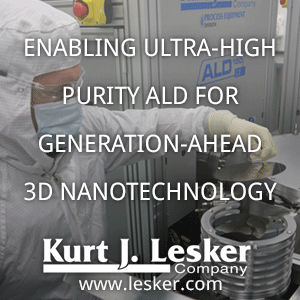According to
press release : VTT Technical Research Centre of Finland has developed smart optical measuring devices with companies for uses that include optimisation of vehicle engines, reduction and monitoring of environmental emissions, and quality control of pharmaceuticals. The FABRY research project aimed at utilisation of VTT-developed technologies to enable commercialisation of new products on global markets. So far, two of the companies involved – Rikola Ltd from Finland and InnoPharma Labs from Ireland – have launched products of their own. VTT’s technology makes it possible to miniaturise an entire measuring laboratory to the size of a small sensor.
Special industry-grade mirror structures realized in the project. (source VTT)
Originally, VTT developed these optical measurement technologies and the associated micromechanical Fabry-Perot interferometer components for the purpose of carbon dioxide measurements. The technology has many other applications, however. VTT joined together with eight companies in the Tekes-financed FABRY project in order to create business from the technology in the form of new products.
In the course of the project, five of the companies started a product development project of their own based on the project results. So far, two of the companies have launched a new product on the market. Rikola Ltd manufactures and sells the world’s smallest hyperspectral camera, which can be used, for example, for surveying fertilisation and irrigation needs in agricultural areas from UAVs. The Irish InnoPharma Labs manufactures Eyemap cameras for the pharmaceutical industry, facilitating rapid verification of the drug ingredients and their distribution in a tablet.
VTT is also in the process of establishing a spin-off company based on this technology, with expected launch in May 2014.
“Apart from new business operations, optical measurement technology also has an impact on employment. In the long run, this could create dozens, or maybe even hundreds of new jobs in Finland,” says Jarkko Antila, Senior Scientist at VTT, who has been coordinating the project.
Tunable MEMS-based Infrared filters. (source VTT)
Participants in the 2011–2014 FABRY project (Spectroscopic sensor devices based on novel FABRY-Perot interferometers) coordinated by VTT were Continental Automotive SAS from France (fuel measurements for the automotive industry, onboard sensor); SICK AG from Germany (demanding industrial gas measurements); InnoPharma Labs from Ireland (automatic quality management and control for drug manufacturing in the pharmaceutical industry); Ocean Optics from the United States (optical spectroscopy and Raman spectroscopy); Murata Electronics from Finland (sensor manufacturing for the automotive industry); Rikola Ltd Oy from Finland (cameras for hyperspectral imaging ; manufacturing of spectrometer modules); Okmetic Oyj from Finland (development and manufacturing of high-quality silicon wafer for optical sensor applications) and VTT Memsfab Ltd (manufacturing of MEMS components).
Fabry-Perot interferometer
The principle of optical measurement, developed at the end of the 19th century, is a widely used technique, for example in astronomy. Expensive scientific instruments are used to identify and measure different materials based on their characteristic spectral lines, thus obtaining information about the composition of the target. VTT has combined this technology with microelectromechanical systems (MEMS), creating an affordable, very small and adjustable spectral filter. This makes it possible to miniaturise an entire measuring laboratory to the size of a small sensor.
Here is a interesting presentation with much more details form Jarkko Antila showing details on ALD MEMS Fabry-Perot interferometer principles and its use for imaging purposes
Screendump from presentration above



%20(1).png)


































